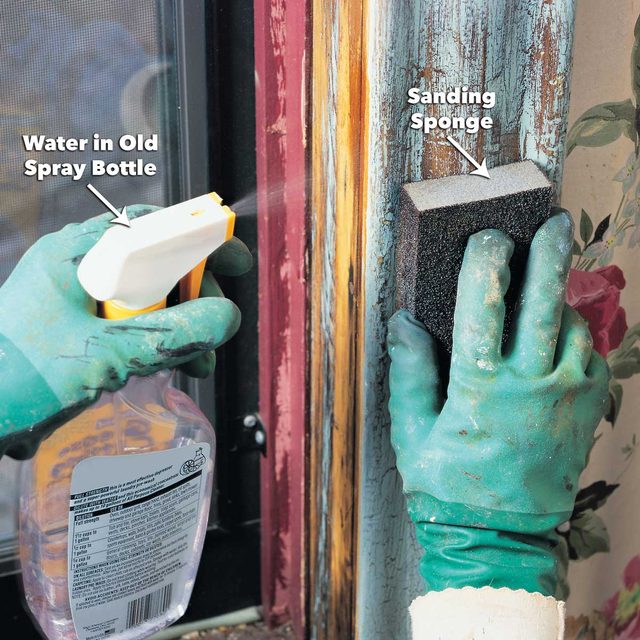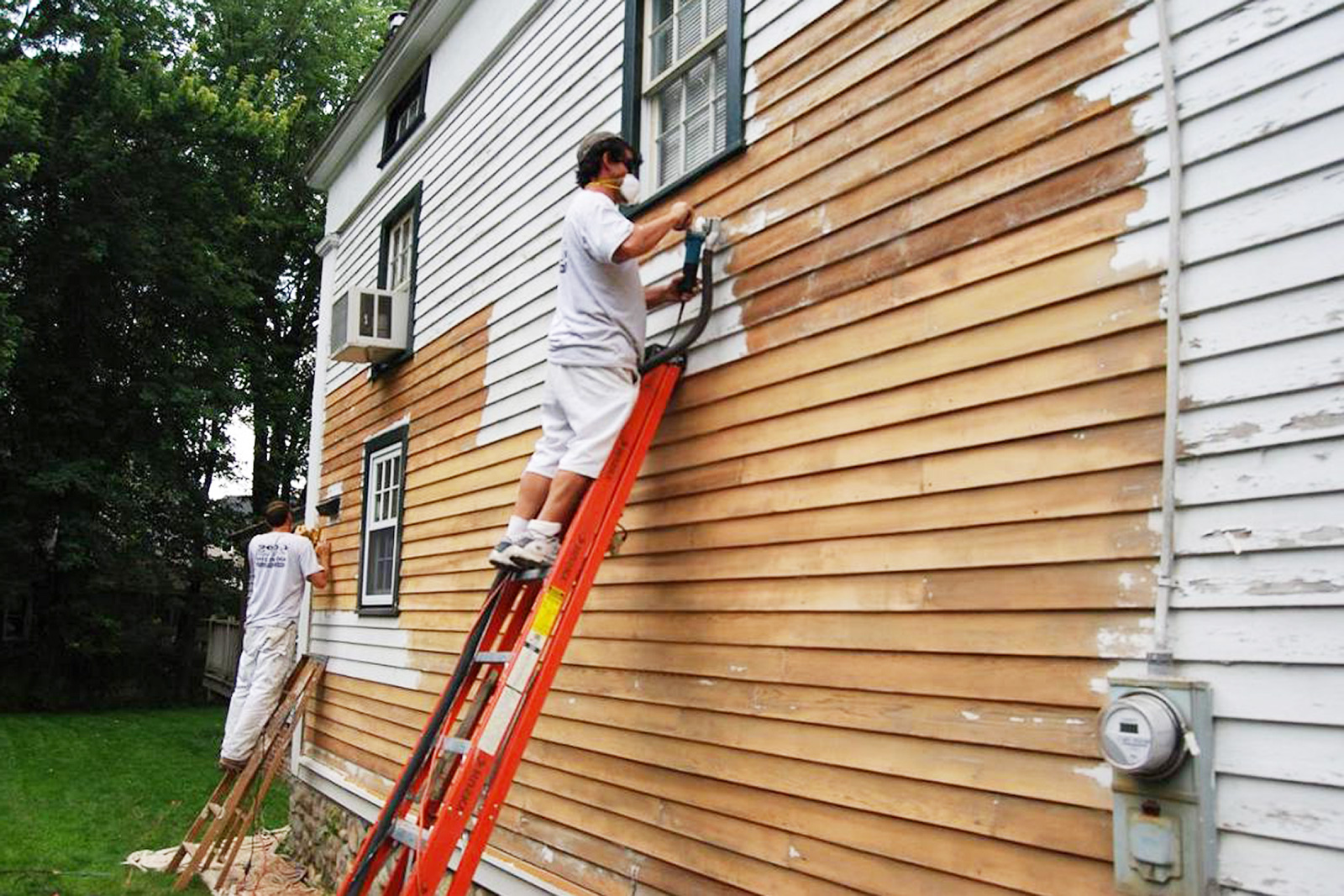Are you wondering how to remove lead paint from wood? It’s a common concern, especially if you’re working on an older project. But fear not, because I’ve got you covered! In this article, we’ll explore some effective methods and safety precautions to help you tackle this task like a pro. So let’s dive in and get those wood surfaces clean and safe!
First things first, removing lead paint requires caution and proper techniques. We’ll show you step-by-step how to do it safely, protecting yourself and the environment. And don’t worry, it’s easier than you might think! From preparing the area to choosing the right tools and products, we’ll walk you through the entire process.
Whether you’re working on a small DIY project or a larger renovation, knowing how to remove lead paint from wood is an essential skill. So let’s grab our safety goggles, put on our work gloves, and let the paint stripping adventure begin! Read on to learn everything you need to know.
- Start by wearing protective gear, such as gloves, goggles, and a respirator mask.
- Seal off the area with plastic sheets to prevent lead dust from spreading.
- Scrape the paint using a putty knife, being careful not to create dust.
- Collect the scraped paint in a plastic bag for proper disposal.
- Clean the area using a HEPA vacuum and wet mop to remove any remaining lead dust.
Remember to follow safety guidelines and dispose of lead paint properly.

How to Remove Lead Paint from Wood: A Complete Guide
Lead paint is a common concern in older homes, particularly those built before 1978. If you have lead paint on your wooden surfaces, it is important to remove it safely to avoid health risks. In this guide, we will walk you through the process of removing lead paint from wood, ensuring you have the knowledge and tools to do it effectively and safely.
Understanding the Dangers of Lead Paint
Lead paint poses a serious health risk, especially when it starts to deteriorate or is disturbed during renovations. The ingestion or inhalation of lead particles can lead to lead poisoning, which can cause a range of health issues, particularly in children and pregnant women. Symptoms of lead poisoning include learning disabilities, developmental delays, behavioral problems, and even organ damage.
When dealing with lead paint, it is crucial to take the necessary precautions to protect yourself and your surroundings. Following proper procedures will minimize the risk of lead exposure and ensure a safe environment for everyone involved.
Lead became a popular additive in paint due to its durability, moisture resistance, and coverage capabilities. However, it was banned in residential paints in the United States in 1978 due to its harmful effects. If your home was built before this date, there’s a good chance it contains lead paint.
The Importance of Professional Testing
Before you begin any lead paint removal process, it is crucial to determine whether lead paint is present. Professional lead testing kits are readily available and are recommended for accurate results. These kits consist of swabs that change color in the presence of lead.
If the results confirm the existence of lead paint, it’s important to proceed with caution and take the necessary steps to ensure safe removal. Reach out to a professional if you are unsure about the testing process or need assistance with the removal process.
Safe Removal Methods for Lead Paint
There are several methods for removing lead paint from wood, each with its own set of pros and cons. The method you choose will depend on factors such as your level of expertise, the size of the project, and the condition of the painted surface. Let’s explore a few commonly used methods:
1. Wet Scrape Method:
– This method involves wetting the painted surface to minimize the release of lead dust.
– Use a scraper or putty knife to gently remove the softened paint.
– Collect the paint chips and debris in a disposable bag for proper disposal.
– Follow up by cleaning the area with a HEPA vacuum and damp cloth.
2. Chemical Stripping:
– Chemical strippers can effectively remove paint but should be used with caution.
– Choose a chemical stripper specifically formulated for lead paint removal.
– Follow the manufacturer’s instructions and wear proper protective gear.
– Work in a well-ventilated area and dispose of the waste according to regulations.
3. Heat Stripping:
– Heat guns or infrared paint strippers can be used to soften and remove lead paint.
– Keep the heat gun moving at all times to avoid scorching the wood.
– Use a scraper or putty knife to gently lift off the softened paint.
– Dispose of the debris safely and clean the area thoroughly afterward.
Remember, regardless of the method you choose, it is essential to follow safety guidelines and wear appropriate protective gear, including goggles, gloves, and a respirator with a HEPA filter. Be sure to adequately ventilate the area and contain the work site to prevent the spread of lead dust.
Proper Disposal of Lead Paint Waste
Once you have removed the lead paint, it is crucial to dispose of the waste properly. Never vacuum or sweep the debris, as this can spread lead dust. Instead, collect the paint chips and debris in disposable bags or containers labeled for hazardous waste.
Check with your local waste management facility to learn about their specific guidelines for disposing of lead paint waste. They may offer drop-off locations or provide information on collection services for hazardous materials. It is important to follow these guidelines to protect the environment and prevent further lead contamination.
Tips for Preventing Lead Paint Hazards
While it’s essential to know how to remove lead paint from wood, it’s equally important to take preventive measures to minimize the risk of exposure in the first place. Here are some tips to help you prevent lead paint hazards:
1. Regularly inspect painted surfaces in your home, especially those that may be worn or damaged.
2. Keep your home clean and dust-free by using wet cleaning methods and HEPA vacuums.
3. Encourage proper handwashing practices, particularly for young children who are more prone to hand-to-mouth contact.
4. When renovating or remodeling, hire a professional who has experience in working with lead-containing materials.
5. Cover lead paint with a durable material, such as drywall, to prevent direct contact.
By following these preventive measures and staying informed about the hazards of lead paint, you can help ensure a safe living environment for you and your family.
Additional Resources
If you would like to learn more about lead paint removal, here are some additional resources that you may find helpful:
1. EPA’s Lead-Based Paint Program: This website provides comprehensive information on lead-based paint hazards, regulations, and safety guidelines. Visit www.epa.gov/lead for more information.
2. Lead-Safe Certified Professionals: If you prefer to hire a professional to handle lead paint removal, look for contractors or firms that are certified through the EPA’s Lead-Safe Certification program. These professionals have undergone training and follow specific work practices to minimize lead exposure.
3. Local Health Department: Contact your local health department for information about lead paint testing, resources, and guidance specific to your area. They can provide valuable information on local regulations and services available to homeowners.
Remember, safety should be your top priority when dealing with lead paint. Whether you choose to hire a professional or tackle the removal process yourself, make sure you follow proper protocols to protect yourself, your family, and the environment.
Key Takeaways: How to Remove Lead Paint from Wood
- Always wear protective clothing and equipment when working with lead paint.
- Start by scraping off loose paint chips carefully, avoiding creating dust.
- Use a liquid paint stripper to dissolve and remove the remaining lead paint.
- After stripping, clean the wood thoroughly with soap and water.
- Dispose of all lead-contaminated materials properly, following local regulations.
Frequently Asked Questions
Are you wondering how to safely remove lead paint from wood surfaces? We’ve got you covered! Check out these frequently asked questions to learn all about the process.
Q1: What precautions should I take before removing lead paint from wood?
Before starting, it’s crucial to ensure your safety and minimize exposure to lead. Start by wearing protective gear such as gloves, safety goggles, and a mask to protect your skin, eyes, and respiratory system. Additionally, cover the surrounding area with plastic sheets to prevent lead dust from spreading.
Make sure to keep children and pregnant women away from the work area, as they are more vulnerable to the harmful effects of lead. Lastly, remember to work in a well-ventilated area to minimize the inhalation of lead dust.
Q2: What tools and materials do I need to remove lead paint from wood?
To remove lead paint from wood, you’ll need a few essential tools and materials. These include a respirator or mask, disposable coveralls, gloves, goggles, a scraper or putty knife, a sanding block, HEPA vacuum cleaner, and a lead-specific cleaner or detergent. You may also need plastic sheets, tape, and drop cloths to protect the surrounding area.
It’s important to use tools and materials specifically designed for lead paint removal to ensure effectiveness and minimize risks associated with lead exposure.
Q3: How do I safely remove lead paint from wood?
Start by wetting the painted surface with water to minimize the generation of lead dust. Next, use a scraper or putty knife to gently remove the loosened paint. Avoid sanding or dry scraping, as it can create harmful lead dust particles.
Once the majority of paint is removed, use a sanding block or sandpaper with a grit of 80 or higher to smooth out any remaining paint. Remember to wet the surface while sanding to keep dust to a minimum. Afterward, thoroughly clean the area using a lead-specific cleaner and a HEPA vacuum cleaner to remove any lead dust residue.
Q4: How should I dispose of the lead paint waste?
It’s crucial to dispose of lead paint waste properly to prevent contamination. Contact your local waste management authorities to find out about the regulations and guidelines for disposing of lead waste in your area. They will provide guidance on whether it can be placed in regular trash or if there are specific procedures or facilities for disposing of it safely.
Ensure that the waste is properly sealed in a heavy-duty plastic bag or container to prevent any potential leaks or contamination.
Q5: Can I remove lead paint from wood myself, or do I need professional help?
While it’s possible to remove lead paint from wood yourself, it’s important to consider the size and complexity of the project, as well as your level of experience and expertise. If the lead paint is present in large areas or requires extensive removal, it may be best to seek professional help.
Professional lead abatement contractors have the necessary knowledge and experience to safely and effectively remove lead paint from wood surfaces, ensuring minimal exposure and adherence to regulations. They also have access to specialized equipment and training that may not be readily available to the average homeowner.

Summary
Removing lead paint from wood can be done safely with a few simple steps. First, make sure to wear protective gear like gloves and a mask. Next, wet the surface before scraping to minimize dust. Dispose of the paint chips properly in sealed bags. Thoroughly clean the area afterward with soapy water. Finally, always test for lead before starting the process to ensure safety.
Remember, safety is important when dealing with lead paint. By following these steps, you can remove lead paint from wood effectively and without putting yourself at risk.
- How to Laser Engrave Wood - May 5, 2024
- How to Use Ryobi Wood Splitter - May 5, 2024
- How to Split Wood Youtube - May 5, 2024